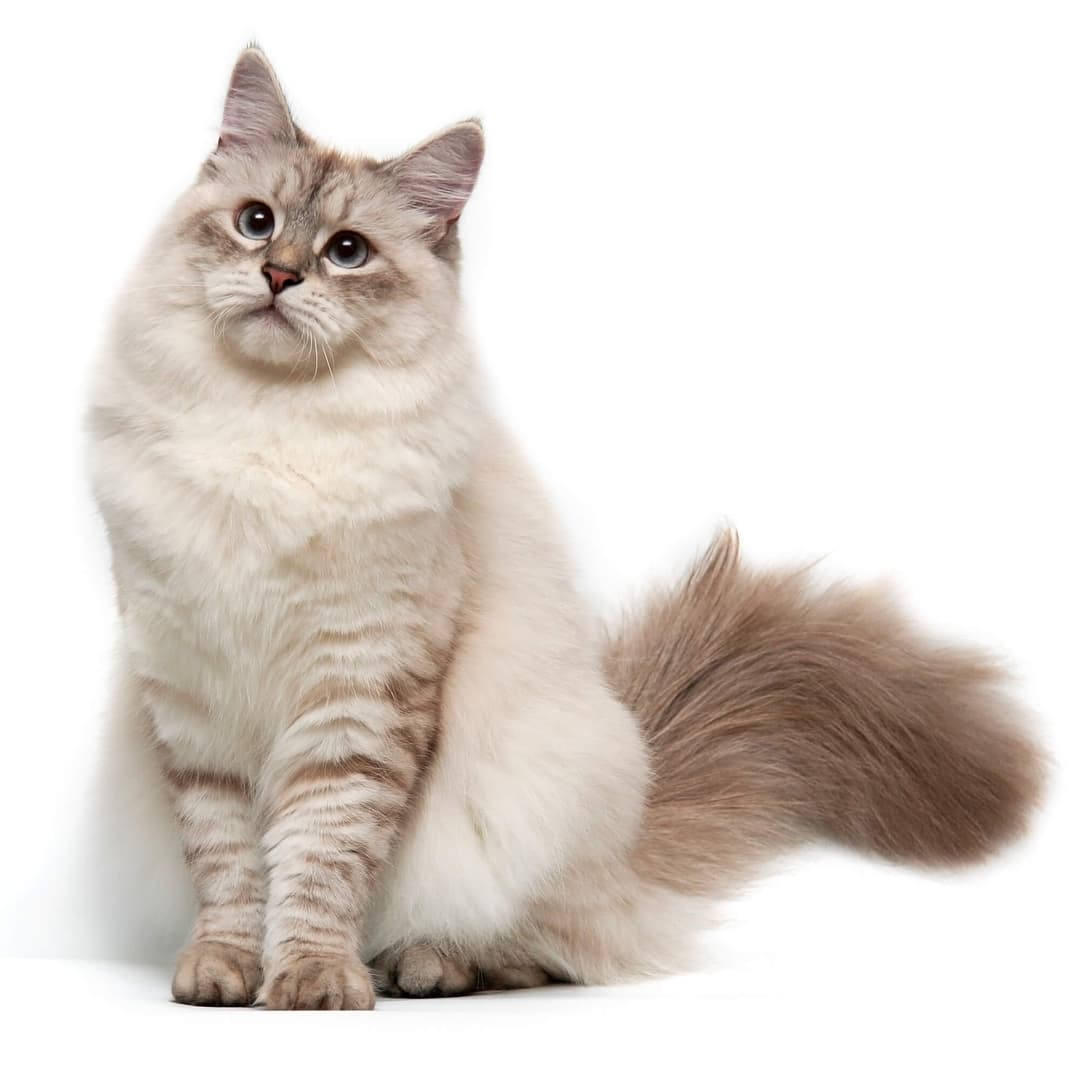Discover your cat's connection to this breed and 20 others


Discover your cat's connection to this breed and 20 others



Siberian catss are affectionate, highly intelligent, playful, and sociable. These kitties have beautiful semi-longhair coats that change with the seasons. The long locks of the Siberian look their best with weekly care and brushing. Also known as the Siberian Forest Cat or Moscow Semi-Longhair, this cat is Russia’s national animal.
For centuries, the Siberian was a landrace variety of a domestic cat in Russia. Also known as the Siberian Forest Cat or Moscow Semi-Longhair, this cat is Russia’s national animal. It is considered an ancient cat and the ancestor of all longhaired modern-day cats. The Siberian has a dense coat that is long and luxurious. It expresses all three natural types of fur: guard hairs, awn hairs, and down hairs. Coat patterns can vary from tabby, solid, tortoiseshell, and colorpoint. With a strong but agile build, Siberians have large, rounded paws and powerful hindquarters that contribute to their exceptional jumping ability.
The first mention of the breed appeared in Harrison Wier’s book entitled, Our Cats and All About Them. Weir was the organizer of the first modern cat show at London’s Crystal Palace in 1871. The Siberian has become a highly popular breed, yet kittens are very expensive to obtain and are relatively rare outside of Europe. It wasn't until the 1990s that the breed was introduced to the United States. It was accepted for registration by the Cat Fanciers' Association in 2000 and received championship status in 2006.
Siberians are easygoing and affectionate, getting along well with other animals and with children. The Siberian is both brave and independent, yet regularly seeks companionship. It is said that they are empathetic cats with a keen sense of the emotions of others, eagerly offering their company and support to humans in need. They are also known as playful cats who keep their adventurous spirit well into adulthood.
Though no health conditions are proven to be tightly associated with Siberian cats, there are some claims about diseases for which they may be at a higher risk. These include hypertrophic cardiomyopathy (HCM), polycystic kidney disease (PKD), hereditary cancer, feline lower urinary tract disease (FLUTD), and periodontal disease. Siberian cats are considered a somewhat hypoallergenic breed because they produce smaller amounts of FelD1, a primary allergen present on cats and kittens.
Siberian cats may be less likely to cause allergic reactions. They are often considered a hypoallergenic breed because they produce less FelD1 in their saliva. FelD1 is the primary cat allergen (out of 5) thought to cause allergic reactions in people.
They love water. The Siberian has majestic fur that not only offers great insulation, but is also waterproof. This may be the reason why these cats love water! You will often catch them playing with faucets, water fountains or water bowls. Don't be surprised if they hop into your shower too!
They are known to be great parents. Females typically prefer mating with only one partner, and males play an unusually big role in parenting.
Siberians are sensational stars and muses. They are commonly portrayed in Russian paintings and writings from hundreds of years ago. A Siberian starred as a cat named Kotofej Ivanovich in the popular Russian folktale, "The Cat Who Became Head Forester" by Alexander Afanasyev. They have been featured in "Enterprise the First Adventure" (Pocket Books, 1986) by Vonda N. McIntyre, the 2016 film "Nine Lives", and the webcomic "Heatlia: Axis Powers".
Recommended by top vets with decades of experience
21 breeds
64 genetic health markers
50 genetic trait markers
